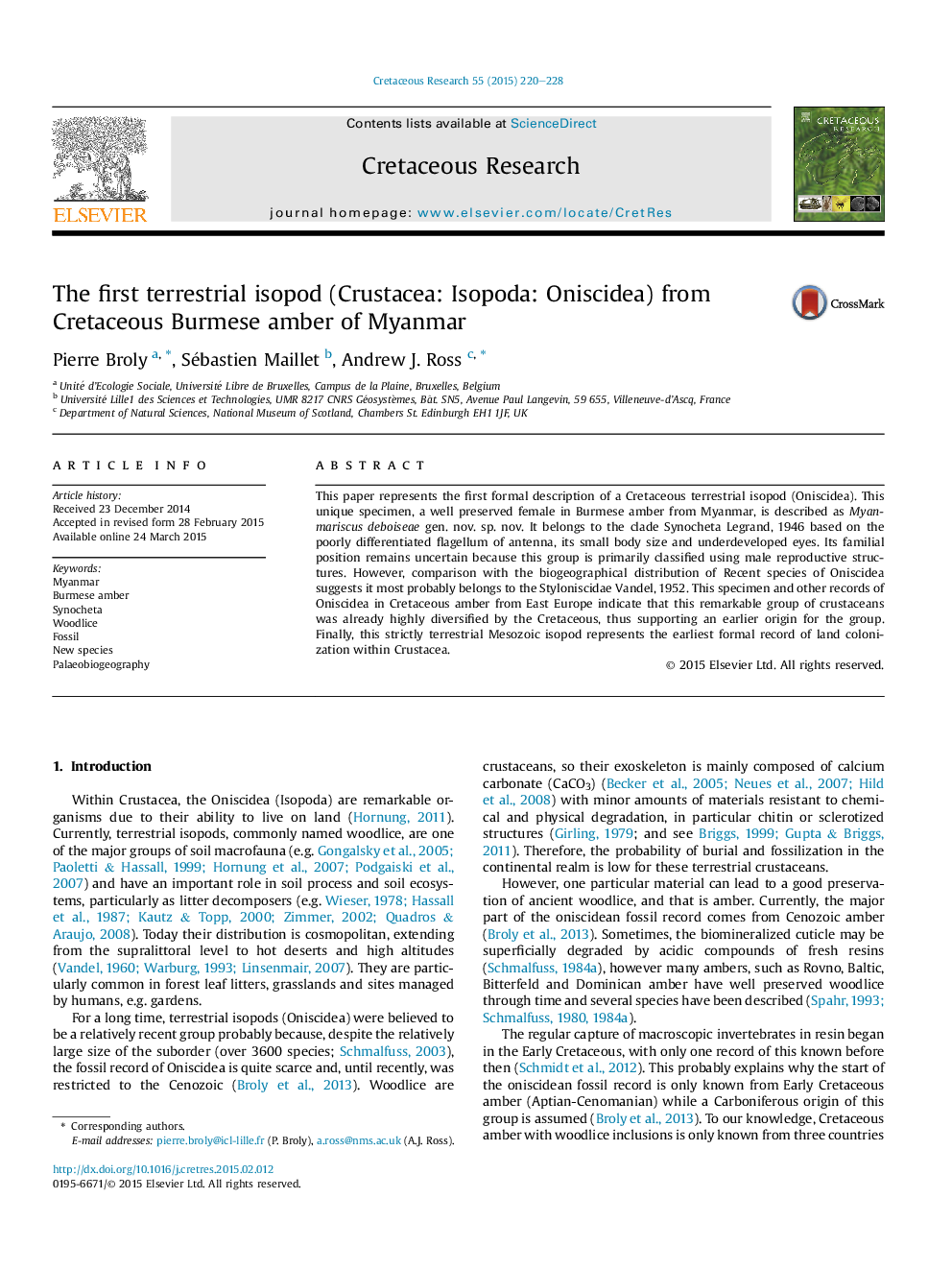| Article ID | Journal | Published Year | Pages | File Type |
|---|---|---|---|---|
| 4746909 | Cretaceous Research | 2015 | 9 Pages |
•The first Cretaceous terrestrial isopod (Oniscidea) is described from Burmese amber.•The specimen is described as Myanmariscus deboiseae gen. nov. sp. nov.•Familial placement of M. deboiseae gen. nov. sp. nov. within Synocheta is discussed and argued in favour of Styloniscidae.•A review of the current distribution of Synocheta is provided, to support the systematic position of the fossil.•This new record is the oldest formal evidence of fully terrestrial colonization in Crustacea.
This paper represents the first formal description of a Cretaceous terrestrial isopod (Oniscidea). This unique specimen, a well preserved female in Burmese amber from Myanmar, is described as Myanmariscus deboiseae gen. nov. sp. nov. It belongs to the clade Synocheta Legrand, 1946 based on the poorly differentiated flagellum of antenna, its small body size and underdeveloped eyes. Its familial position remains uncertain because this group is primarily classified using male reproductive structures. However, comparison with the biogeographical distribution of Recent species of Oniscidea suggests it most probably belongs to the Styloniscidae Vandel, 1952. This specimen and other records of Oniscidea in Cretaceous amber from East Europe indicate that this remarkable group of crustaceans was already highly diversified by the Cretaceous, thus supporting an earlier origin for the group. Finally, this strictly terrestrial Mesozoic isopod represents the earliest formal record of land colonization within Crustacea.
